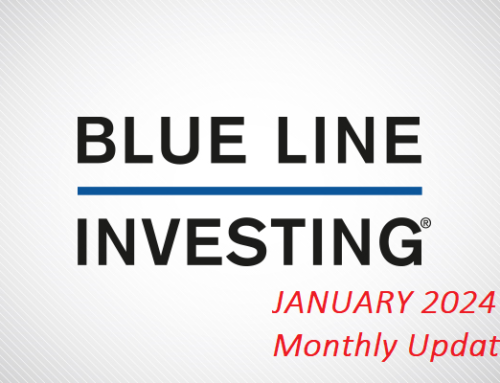
Blue Line Investing, Article 12 of 12
The image above shows several stacked stones. Beginning with the foundation stone, each successive stone must remain stable and in balance in order to act as a foundation stone for the one to follow. In similar fashion, each of the articles in this series is like one of the stones above, with each establishing a principal and foundation for the one to follow.
Our first article laid the foundation stone, which questioned the logic of centering the investment decision on you (and your age) rather than the stock market itself. You may recall at one point in history man believed the earth was the center of the universe. And as foolish as that may seem today, we believe the same can be said of centering investment decisions on your age, an approach that requires luck. For instance, the investor who retired at age 65 in the early 1980’s likely had a far different retirement experience compared to the investor who retired at age 65 in the late 1990’s. One was lucky, while the other was not. After questioning this logic our second article proposed changing the focus of time. Rather than time being a factor of your age, why not view time as a perspective? Specifically, learn how to observe the stock market from different perspectives of time to conclude whether your choice to take risk at current prices could be rewarded or punished, regardless of your age? In our third, fourth, and fifth articles we provided illustrations from the daily, weekly, and monthly perspectives of time to explore this concept in real time.
Beginning with our sixth article we began to explore deeper concepts within our investment philosophy and process. We explained the idea of using “witnesses” to see if the market itself could provide clues, or “tells,” of whether the current primary trend is expected to continue or if it might be in a state of change. In our seventh article we questioned if diversification by itself really helps to reduce risk? In our eighth article we explored a common practice in the investment industry where in some cases, active management has become a commodity. This common practice entails charging a fee to substitute investments, all the while remaining fully invested often without regard for the primary trend of the stock market. In our ninth article we explored how a sell discipline over the long run could help you minimize your losses during major stock market downturns. By doing so, it could put you in a position to buy again at lower prices in the future. In our tenth article we explained a few reasons for why we prefer using exchange-traded funds (ETFs) compared to most individual stocks and mutual funds. And in our last article, we introduced the concept for how to use inverse ETFs in attempt to protect your investment portfolio, or even potentially profit, during major stock market downturns.
While the future remains unknown, we expect it to mirror the past. Markets will rise and fall. Primary trends will change: from positive to negative; from negative to positive; and from positive to neutral. But regardless of the primary trend, we believe a disciplined, rules-based investment process can help achieve balance. Balance with your emotions. Balance with how you make investment decisions. Balance with how you search for investment opportunity. And balance in life. Thank you for reading this article series and please visit our website at www.BlueLineInvesting.com to learn more about our services and investment process.
Disclaimer:
Past performance is not indicative of future results. This material is intended for educational purposes only and is not financial advice or an offer to buy or sell any product. The investment strategy discussed may not be suitable for all investors. Investors must make their own decisions based on their specific investment objectives and financial circumstances. The opinions expressed are those of Blue Line Investing and are not necessarily those of Gordon Asset Management, LLC and are subject to change without notice. Blue Line Investing reserves the right to modify its current investment strategies based on changing market dynamics or client needs. Advisory services offered through Gordon Asset Management, LLC (GAM). GAM is an SEC-registered investment adviser. Registration does not imply a certain level or skill or training. More information about the advisor, its investment strategies and objectives, is included in the firm’s Form ADV Part 2, which can be obtained, at no charge, by calling (866) 216-1920. The principle office of Gordon Asset Management, LLC is located at 1007 Slater Road, Suite 200, Durham, North Carolina, 27703.




